Now that I’m home again, I’ve restarted work on Seasons of Creativity. I was thinking about it on my trip, but trying doing complex Photoshop work with a mouse on a 13″ laptop screen, when you’re used to working with a pen on a 22″ tablet-monitor, is like trying to move a giant pile of sand with tweezers. After about five minutes I gave up.
Here’s the sketch for “Seasons of Creativity” now:
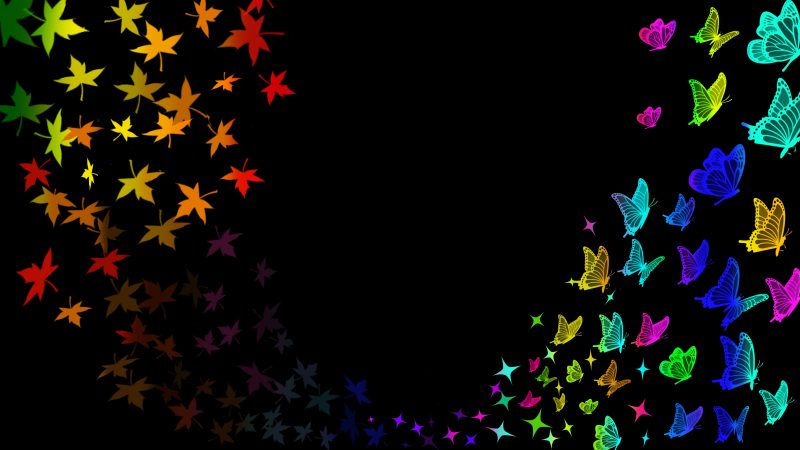
(Apologies for the disappearing leaves – on my tablet-monitor the darker leaves show up clearly, on the other monitor they are so dark they nearly disappear against the black. Yet both monitors were color-calibrated using professional equipment. So I have no idea how they will appear on your monitor. Go figure.)
I like this sketch a lot better. Conceptually, the idea is that the leaves are falling down, decaying, and reappearing as sparks of new ideas, which evolve into butterflies of new work that then fly off in new directions. The previous sketch had transformed the leaves directly into butterflies, which seemed to leave out the critical step of genesis. There was ripening and harvest, then decay, but the immediate appearance of butterflies seemed to suggest the immediate springing forth of new work, and it just doesn’t happen that way.
Here’s the initial sketch, to jog your memory:
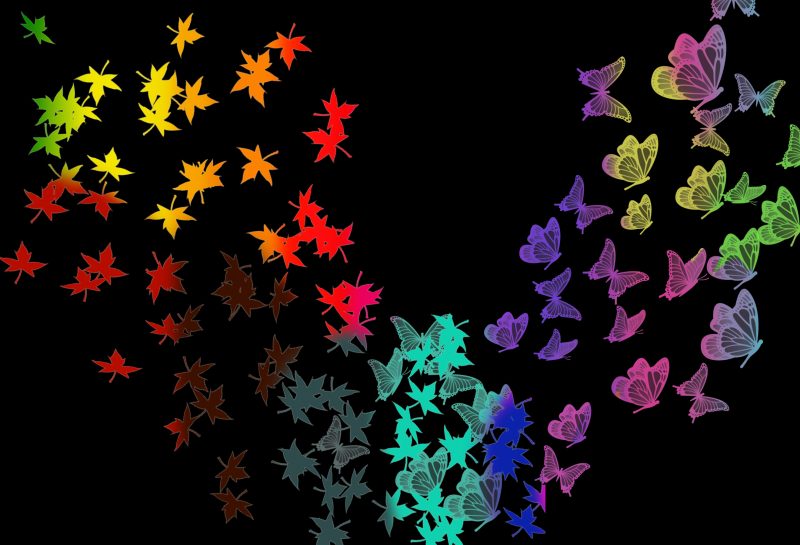
The new sketch is a lot cleaner visually, and works better conceptually. Though I like the colors better in the old sketch – I think I may lighten the colors a bit in the new sketch, and replace the dark blue with spring green and pastel purple/light blue.
Which gets me to colors. Experienced weavers will no doubt be looking at “Seasons of Creativity” and saying WTF? How on earth are you going to get that many colors into a single piece without using a bazillion wefts? Especially with a solid black warp on the loom?
Short answer: painted wefts.
I’m planning to use four wefts for this piece (for non-weavers: weft threads are the ones that run cross-wise across the fabric). The piece is woven “sideways” – the warp runs from left to right in the image, so the weft appears to run top to bottom. (This is accomplished by taking the finished cloth and turning it sideways. 🙂 )
One weft will be black, for the background. The other four will be dyed in different stripes of changing colors. Different leaves and butterflies will be woven with different wefts, allowing me a wide variety of colors with a limited number of wefts. Voila! Magic.
Let me show you how this works. Here’s the pattern of colors for weft #1. If you were to see only the weft down the length of the piece, here’s what you’d see:
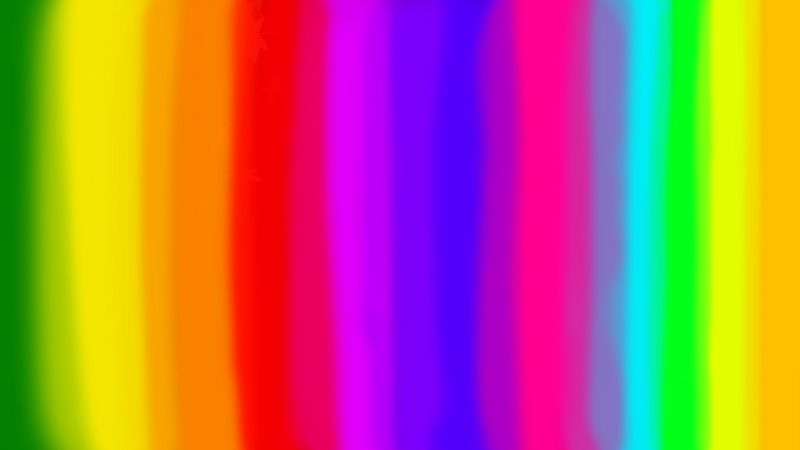
And here are the leaves that are woven with weft #1 on top. All other wefts are hiding on the bottom of the fabric when these leaves/butterflies are being woven:
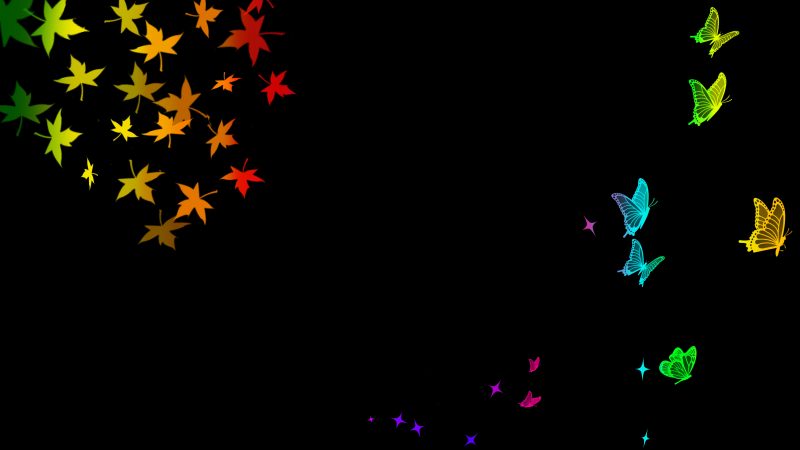
(Technically this is showing the black background, which is weft #4, as well as the brightly colored weft #1, but it’s much easier to see the motifs against the black background, so I left it in.)
Here is the color pattern for weft #2:
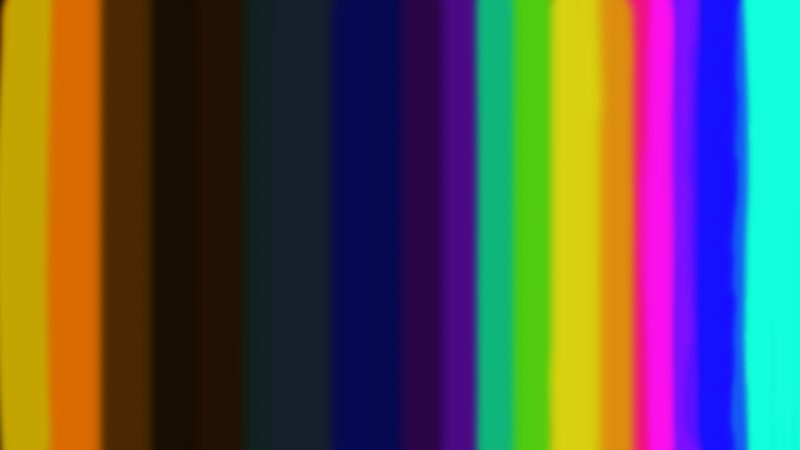
And here are its leaves/butterflies:
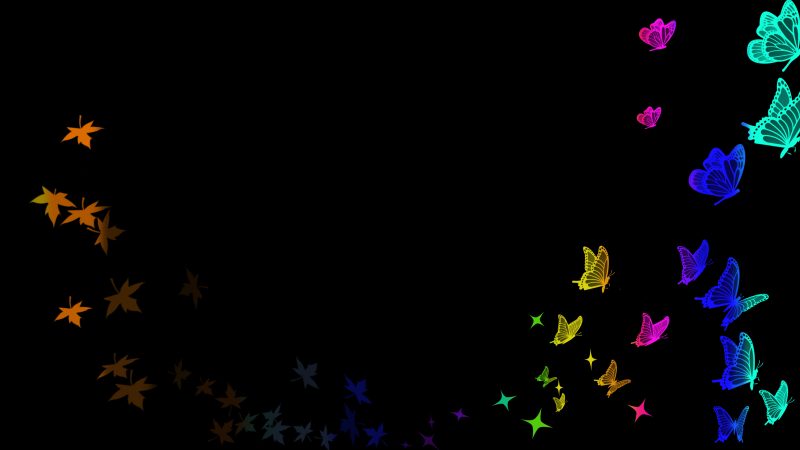
Here’s weft #3:
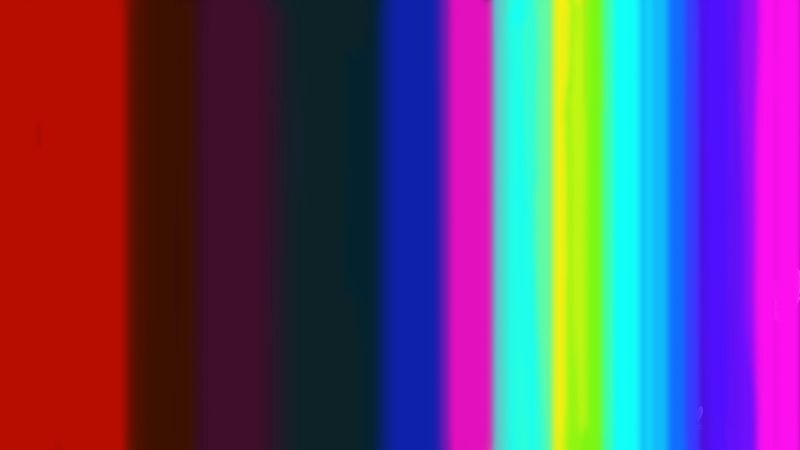
And its leaves/butterflies:
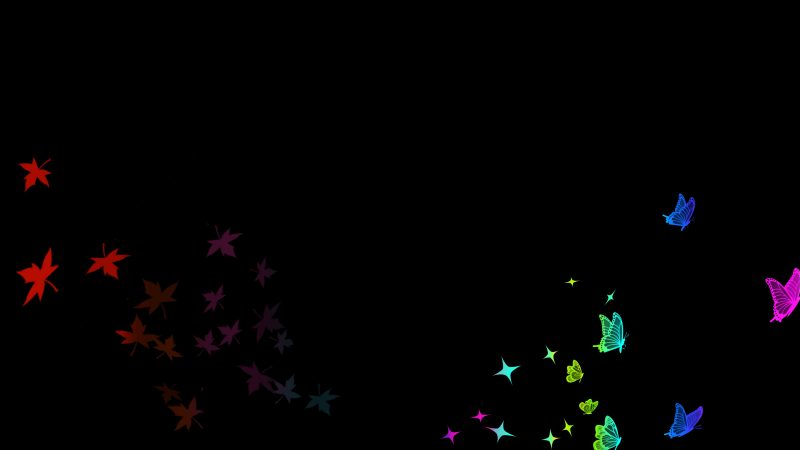
Put them all together and you get the original sketch:
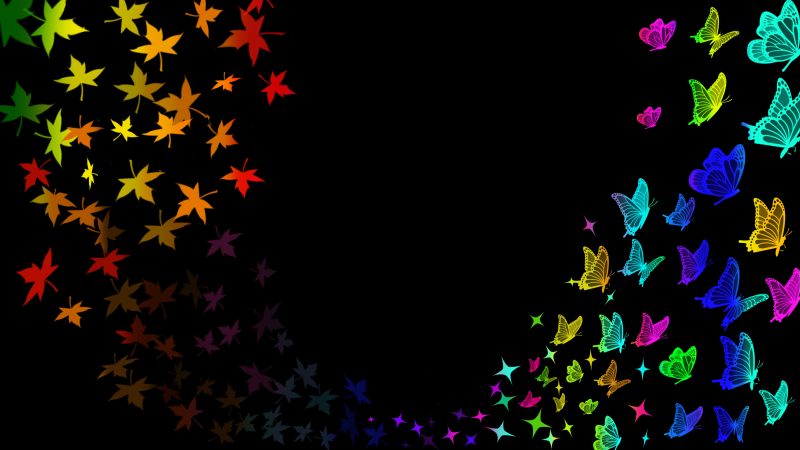
Now, you might wonder how I plan to get all those color changes, and especially how I plan to get those nice blended colors at the boundaries, since dyeing a bazillion skeins of weft yarn takes a lot of time and results in ugly, sharp color changes.
Well, some of you may remember Autumn Splendor, and the knitted blanks I used to create ten excruciatingly accurate matching panels of handwoven fabric for that piece:
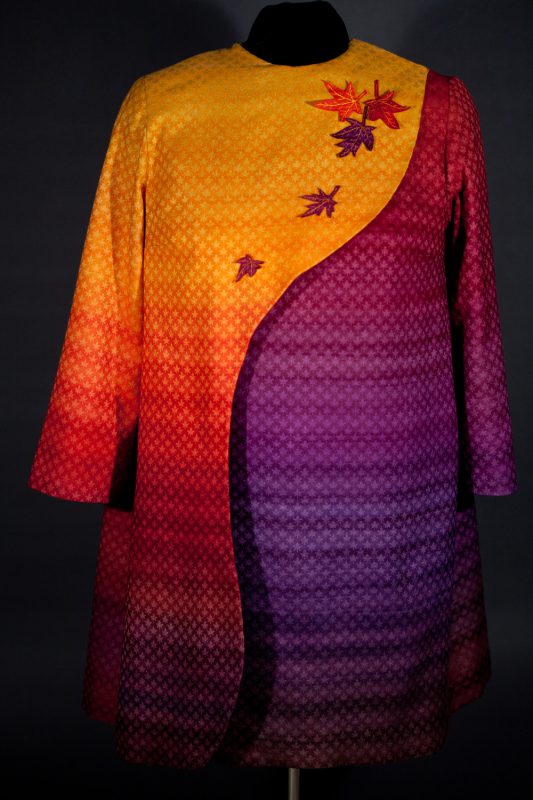
The piece looks like the sleeves and front panels (and back panels, and side panels, and facings) were dyed in a single bout. ‘Tain’t so. I simply dyed the weft so the color changes matched up precisely, using knitted blanks.
Knitted blanks are long rectangular pieces of knitted fabric that you dye and then unravel to use as yarn in something else. Knitters commonly use them for making socks. I use them for controlling weft color changes. Here’s one of the (insanely long) knitted blanks for Autumn Splendor:
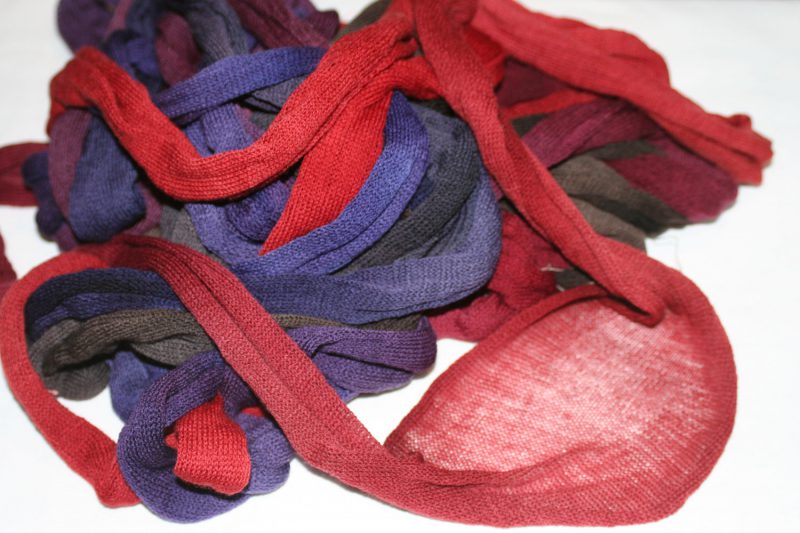
I figure that all I need to do is create three of those, in precisely defined color intervals, and I’ll be in business.
I’m also thinking of using four different yarns – mercerized cotton for the warp and the leaves, unmercerized cotton for the background, silk for the stars and the butterflies, and iridescent thread carry-alongs for the stars and butterflies, but will have to do some serious sampling there to make sure the proportions and aspect ratios come out right.
I’m really going to have to get cracking on all this, though – the deadline for Convergence entry is February 5, which gives me less than 2 months to get everything done. And the deadline for Complexity is coming up a few weeks after that – I’d like to have a piece in Complexity as well, which really puts me under the gun. No time to lose!!
